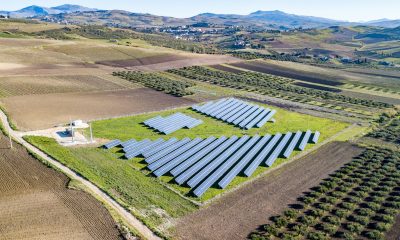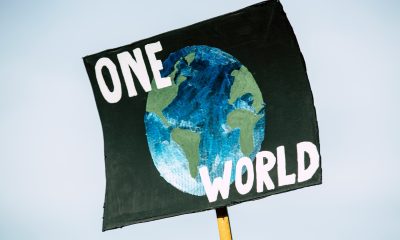Featured
Damage and Loss Fund Created by COP27 for Countries Affected by Climate Change
Following negotiations with the EU and the United States, the text limits access to funding to “particularly vulnerable” developing countries. Although it is not specified who can be required to contribute to the fund, the countries have agreed that those countries with the highest emissions, such as China and India, can contribute to the fund.

The Climate Summit (COP27) held in the city of Sharm El-Sheikh ended in the early hours of the morning with an agreement in extremis for the creation of a loss and damage funding scheme for countries affected by climate change. The summit scores the victory of having achieved a unanimous compromise in a complex geopolitical context impacted by war and winds of de-globalization, but it is also among the most disappointing in recent years.
“It is not enough to move people and the planet forward,” admitted the Vice-President of the European Commission, Frans Timmermans, with clear signs of weariness, at the close of the negotiations in Egypt. This statement was echoed by the Secretary General of the United Nations, António Guterres, who, while welcoming the approval, regretted that “it is clearly not going to be enough.”
What has been achieved during these two weeks of November has been a fund to finance the climate damage suffered by some of the most vulnerable countries, although it is still not clear who will have to contribute money and when it will be operational.
This new tool has been approved after the insistence of the most affected countries, while the European Union (EU) and the United States preferred to use existing tools, arguing that the creation of a new system would delay financing. After the summit, a Transitional Committee will be created that will have to make decisions on the new fund by the end of 2023.
China, along with the G77 countries (a group of 134 developing countries with the aim of supporting the UN deliberations), intended the fund to operate from developed countries to those classified as developing according to a 1992 classification, under which China itself as well as Qatar or Saudi Arabia could be beneficiaries of the fund.
Read more about the COP27 Summit and find other important economic news with our companion app Born2Invest
COP27 has created a loss and damage funding scheme for countries affected by climate change
Following negotiations with the EU and the United States, the text limits access to funding to “particularly vulnerable” developing countries. Although it is not specified who can be required to contribute to the fund, the countries have agreed that those countries with the highest emissions, such as China and India, can contribute to the fund. The amount allocated to the fund and how the payment of losses and damages caused will be made also remain to be specified.
The conference also launched a work program on mitigation and called on governments to review and strengthen the 2030 targets in their climate action plans for this year.
For several days, the summit was on the verge of blowing up. The EU threatened to walk out of the meeting if the goal of limiting the global temperature rise to 1.5 degrees Celsius was not met. “We would rather no action than bad action,” said Frans Timmermans, adding that there was little point in setting up a fund to deal with the climate consequences if measures were not put in place to prevent the crisis from escalating further.
The EU threatened to walk out of the summit if the goal of limiting the global temperature increase to 1.5 degrees Celsius was not achieved
After the meeting ended, UN Secretary-General António Guterres noted that “this was a red line we should not cross,” but for that the world needs to “invest in renewable energy and end the addiction to fossil fuels.”
However, the meeting ended without any agreement on phasing out fossil fuels, the biggest driver of climate change. Following the demands of the Organization of the Petroleum Exporting Countries (OPEC), the final COP27 agreement includes a commitment to low-emission energies instead of phasing out fossil fuels.
Tension grew when the German Foreign Minister, Annalena Baerbock, pointed the finger directly at the OPEC countries, assuring that “it is frustrating to see how big emitters and oil producers obstruct the overdue steps in mitigation and the elimination of fossil fuels.”
Brussels assures that there are many parties that are not willing to move forward in the fight against the climate crisis
The final text of the COP27, moreover, does not commit or oblige to reduce greenhouse gas emissions, but it is committed to “review and strengthen” this commitment before the next summit, to be held in Dubai in November 2023. Brussels has expressed its disappointment with the final agreement.
At the closing ceremony, the European Commission expressed that the plan does not contain sufficient efforts nor does it generate a greater degree of confidence with respect to previous COP meetings. At the same time, they pointed out that “there are many parties that are not willing to move forward today in the fight against the climate crisis.”
Timmermans recalled that the document “puts unnecessary barriers in the way and allows actors to shirk their responsibilities. For the representative of the European Commission, the countries are not betting on clearer measures because “they are afraid of the transition ahead.”
__
(Featured image by Li-An Lim via Unsplash)
DISCLAIMER: This article was written by a third party contributor and does not reflect the opinion of Born2Invest, its management, staff or its associates. Please review our disclaimer for more information.
This article may include forward-looking statements. These forward-looking statements generally are identified by the words “believe,” “project,” “estimate,” “become,” “plan,” “will,” and similar expressions. These forward-looking statements involve known and unknown risks as well as uncertainties, including those discussed in the following cautionary statements and elsewhere in this article and on this site. Although the Company may believe that its expectations are based on reasonable assumptions, the actual results that the Company may achieve may differ materially from any forward-looking statements, which reflect the opinions of the management of the Company only as of the date hereof. Additionally, please make sure to read these important disclosures.
First published in PlantaDoce, a third-party contributor translated and adapted the article from the original. In case of discrepancy, the original will prevail.
Although we made reasonable efforts to provide accurate translations, some parts may be incorrect. Born2Invest assumes no responsibility for errors, omissions or ambiguities in the translations provided on this website. Any person or entity relying on translated content does so at their own risk. Born2Invest is not responsible for losses caused by such reliance on the accuracy or reliability of translated information. If you wish to report an error or inaccuracy in the translation, we encourage you to contact us.

-

 Crowdfunding6 days ago
Crowdfunding6 days agoSavwa Wins Global Design Awards and Launches Water-Saving Carafe on Kickstarter
-

 Biotech2 weeks ago
Biotech2 weeks agoAsebio 2024: Driving Biotechnology as a Pillar of Spain and Europe’s Strategic Future
-

 Business2 days ago
Business2 days agoDow Jones Nears New High as Historic Signals Flash Caution
-

 Business2 weeks ago
Business2 weeks agoFed Holds Interest Rates Steady Amid Solid Economic Indicators

























